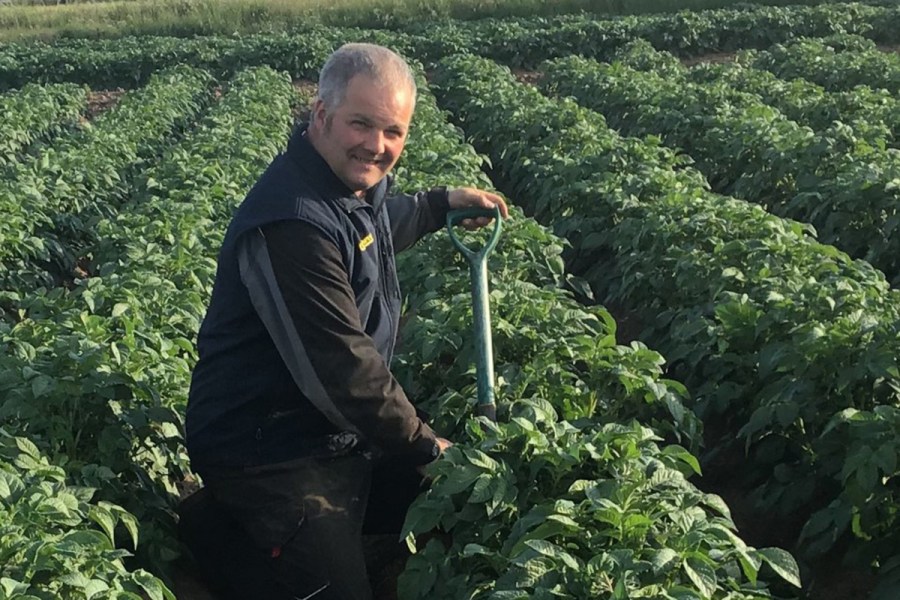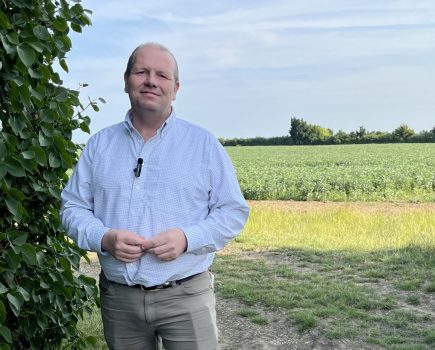By Andrew Wilson
Before I get my crystal ball out, I think we should consider the past – 25 years ago feels like it should be 1985, but it’s actually 1999 – scary!
After safety cabs, power steering and dual power in the 70s and 80s, came air conditioning, powershift and suspension in the 1990s. This morphed into constantly variable transmissions, greater versatility and GPS. And precision – accurate ridges, arrow-straight drilling, section control and variable rate.
So, is tech the future? Personally, the more complicated the kit, the lower the reliability. Every cost to my business has to be balanced by at least equal value or we go backward fast. Tech is ever more expensive yet no more reliable than it was in 1999.
There are lots of ‘nice to have’ extras, but how much of it makes money for the farmer rather than the service providers? Downtime is phenomenally expensive. Robotics have a place, but I think they’re unsuited to UK broadacre arable farming – belonging in labour-intensive, slow-speed, high-precision vegetable work, and on the wide plains of eastern Europe, America, Canada and Australia, but perhaps less so in increasingly urban Britain.
Chemistry is an emotive and interesting element of the present and the future. Since 1999, we’ve lost once familiar products like paraquat, diquat, aldicarb, oxamyl, CIPC and chlorpyrifos. Mancozeb is next on the hit list and fosthiazate not far away.
Fortunately, we’ve seen some new blight fungicides come through in recent years, but so too have new and more aggressive blight strains. Crop nutrition concerns me less than disease control, but to stay economically viable, our markets must respond.
In my view, the future lies in plant breeding, genetics and education. Through my own trials I’ve learned the power of not just potato cyst nematode resistance, but arguably more important, PCN tolerance, as well as drought, temperature and pest resilience. Plus, the effect of stewardship and the wider rotation on free living nematodes and tobacco rattle virus.
Blight resistance seems to have had a greater focus recently but has a way to go before spraying returns to the less intensive ways of 40 years ago (we’re back to 1985!)
One of the greatest hurdles is that of education. In the same way Hoover is the proverbial vacuum cleaner and JCB the digger, glyphosate is arguably the ag chem name most recognised by the masses and equally, Maris Piper and King Edward are the familiar potato varieties. This must change.
For potato production to go forward, some of the older, traditional PCN-multiplying and warm-stored varieties must become rare breeds. The processing market is less affected by this than the fresh market, but there’s a way to go before UK potato volumes become less reliant on chemistry to deliver the quality of crop required.
So then, to regen – is it the answer? As ever, going extreme with anything rarely comes to acceptable fruition, but there are always better ways of doing everything. Constant evaluation and structured change are necessary to remain resilient and viable, never more so than in potatoes – if I still produced my crops via the methods employed in the 1990s with today’s costs, we’d very quickly be in an unattractive position.
At one time we ploughed in October then struggled with slumped soil in spring so either superflowed repeatedly, ploughed again, or both. It was ridged, then bed tilled usually twice in front of the old webbed destoner. Whereas now, we cultivate after the cover crop in spring, plough shallower, Simba TL, ridge and destone with a mostly starred machine. We bed till about a quarter of the area rather than 150%. Both the planet and overdraft are better for it!
Cover crops are a noticeable change for us on time gone by and have resulted in less fuel per hectare to grow the crop, reduced nematicide use and better tuber quality, mostly from improved soil health and higher physical organic matter in the ridges. This is a constantly evolving feat as science and knowledge grows, and I foresee this area developing further in the future as strategic plants replace synthetic chemistry. This doesn’t mean organic is the way forward, but soil fumigants will be found in the rare breeds section if they exist at all in future.
Livestock integration has recently become more commonplace, but I think it unlikely we’ll get back to most farms having a yard of bullocks and fields of fat lambs in 25 short years. Muck is valuable, but infrastructure, staff and skills take huge commitment that not everybody has or desires.
Green manure, however, has more legs and ties in better with things like government policy. Short-term high-administration-demanding box ticking schemes like SFI, I feel, will be a flash in the pan, but legislation adhering measures like water course margins (that we’ve had here at least 25 years) are something which I think will and should stay.
Which leaves me with politics – arguably the greatest threat to British agriculture. Short-term politics never was and never will be compatible with a long-term industry like agriculture. Most of their crack pot ideas are short-term, ill thought out, impractical and lack any consideration of consequence – solar panels belong on roofs not fields, land should produce food, moving water should produce power. It’s really not complicated.
Will we see a repeat of the 1930s by 2050? Who knows, but the decreasing number of farmers feeding an ever-greater population trend will have to adjust by then for sure. A few huge corporate agribusinesses and a handful of small-scale peasants won’t be a desirable goal for many of today’s farmers, but is a possible, if undesirable and arguably inefficient outcome.
Where there is threat, there is opportunity. It’s our job as farmers to bolster the strength and navigate the weaknesses. We’ve always found a way forward; I guess we always will.
This article was taken from the latest issue of CPM. For more articles like this, subscribe here.
Sign up for Crop Production Magazine’s FREE e-newsletter here.




